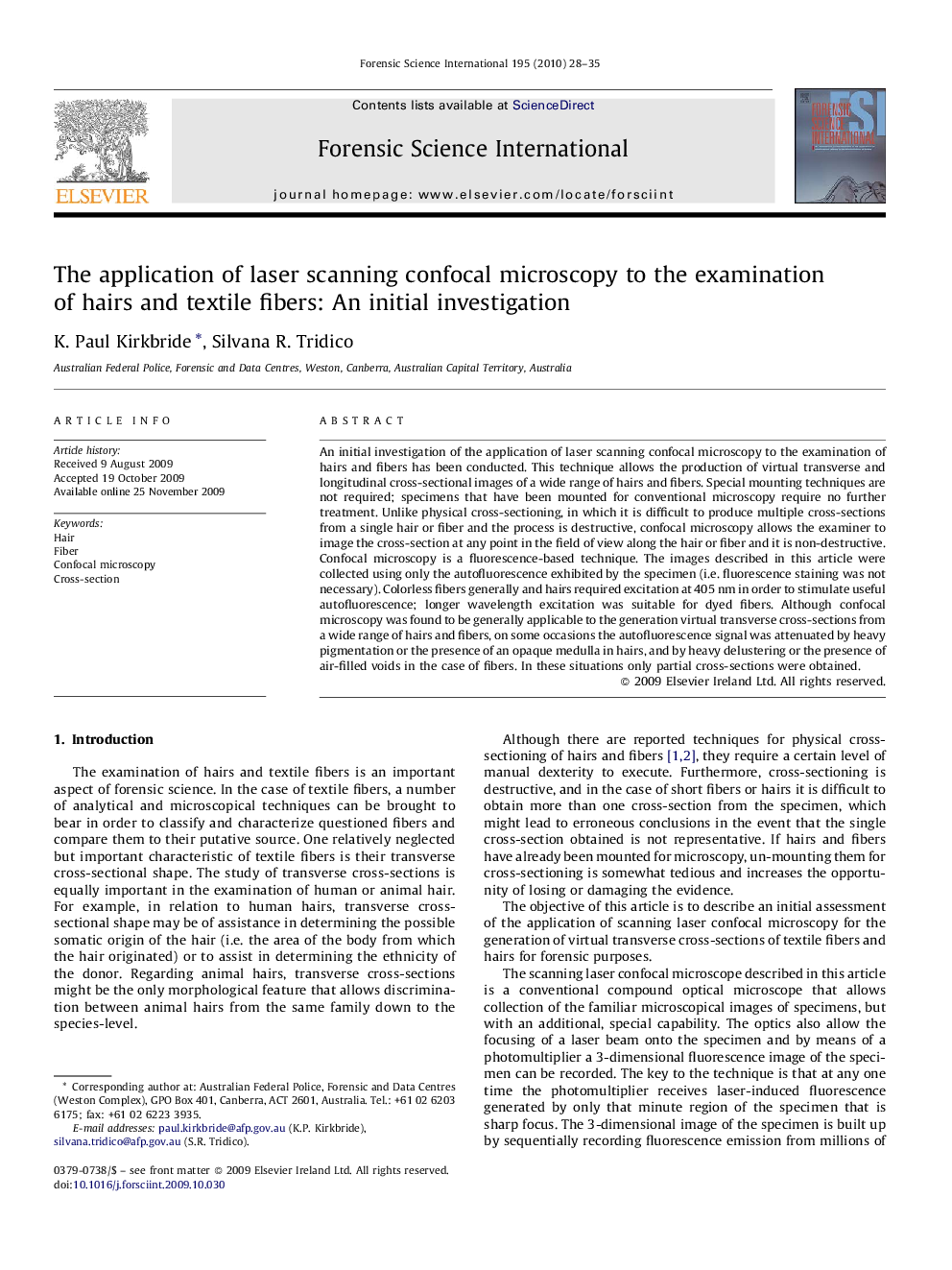| Article ID | Journal | Published Year | Pages | File Type |
|---|---|---|---|---|
| 97188 | Forensic Science International | 2010 | 8 Pages |
An initial investigation of the application of laser scanning confocal microscopy to the examination of hairs and fibers has been conducted. This technique allows the production of virtual transverse and longitudinal cross-sectional images of a wide range of hairs and fibers. Special mounting techniques are not required; specimens that have been mounted for conventional microscopy require no further treatment. Unlike physical cross-sectioning, in which it is difficult to produce multiple cross-sections from a single hair or fiber and the process is destructive, confocal microscopy allows the examiner to image the cross-section at any point in the field of view along the hair or fiber and it is non-destructive. Confocal microscopy is a fluorescence-based technique. The images described in this article were collected using only the autofluorescence exhibited by the specimen (i.e. fluorescence staining was not necessary). Colorless fibers generally and hairs required excitation at 405 nm in order to stimulate useful autofluorescence; longer wavelength excitation was suitable for dyed fibers. Although confocal microscopy was found to be generally applicable to the generation virtual transverse cross-sections from a wide range of hairs and fibers, on some occasions the autofluorescence signal was attenuated by heavy pigmentation or the presence of an opaque medulla in hairs, and by heavy delustering or the presence of air-filled voids in the case of fibers. In these situations only partial cross-sections were obtained.
